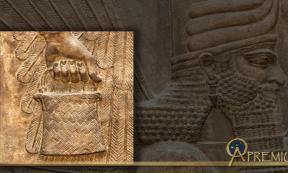Babylon
Babylonia refers to the ancient civilization and empire centered on the city of Babylon, which existed from around 1894 BC to 539 BC. It was one of the most influential and prominent civilizations in Mesopotamia. Here are some of the main events and rulers of Babylonia:
Events
- Hammurabi's Code: One of the most significant events in Babylonia's history was the establishment of Hammurabi's Code. Hammurabi, the sixth king of the First Dynasty of Babylon, introduced a comprehensive set of laws and regulations that governed various aspects of Babylonian society. The code is known for its principle of "an eye for an eye" and laid the foundation for subsequent legal systems.
- The Assyrian Conquest: Babylonia faced repeated invasions and struggles for dominance with the neighboring Assyrian Empire. Assyrian kings, such as Tiglath-Pileser I, Tukulti-Ninurta I, and Ashurbanipal, periodically invaded and exerted control over Babylonia, leading to periods of Assyrian dominance.
- The Chaldean Dynasty: The Chaldeans, led by Nabopolassar and his son Nebuchadnezzar II, played a significant role in Babylonia's history. They rebelled against the Assyrian Empire and established the Neo-Babylonian Empire, which became a major power in the region.
- Construction of Babylon: The city of Babylon, under various rulers, witnessed significant construction projects and architectural achievements. Nebuchadnezzar II, in particular, constructed the famous Hanging Gardens of Babylon, one of the Seven Wonders of the Ancient World.
- The Fall of Babylon: The fall of Babylon marks a significant event in Babylonia's history. In 539 BC, the Persian Achaemenid Empire, under the command of Cyrus the Great, captured Babylon and brought an end to the Neo-Babylonian Empire.
Rulers
- Hammurabi: Hammurabi, also known as Hammurabi the Great, was one of the most famous rulers of Babylonia. He is known for his codification of laws and his efforts to centralize the governance of the region. Hammurabi's reign is considered a high point in Babylonia's history.
- Nebuchadnezzar II: Nebuchadnezzar II was one of the most powerful and well-known kings of Babylon. He expanded the empire's territory and conducted extensive building projects, including the rebuilding of Babylon and the construction of the Hanging Gardens. Nebuchadnezzar II is mentioned in the Bible and is known for his military campaigns and the Babylonian Captivity of the Jewish people.
- Nabopolassar: Nabopolassar founded the Chaldean Dynasty and rebelled against the Assyrian Empire. He played a crucial role in the downfall of Assyria and the establishment of the Neo-Babylonian Empire.
- Nabonidus: Nabonidus was the last king of the Neo-Babylonian Empire. He is known for his religious reforms and his focus on the worship of the moon god Sin. His reign saw the rise of his son Belshazzar, who is mentioned in the biblical story of the "Writing on the Wall."









































